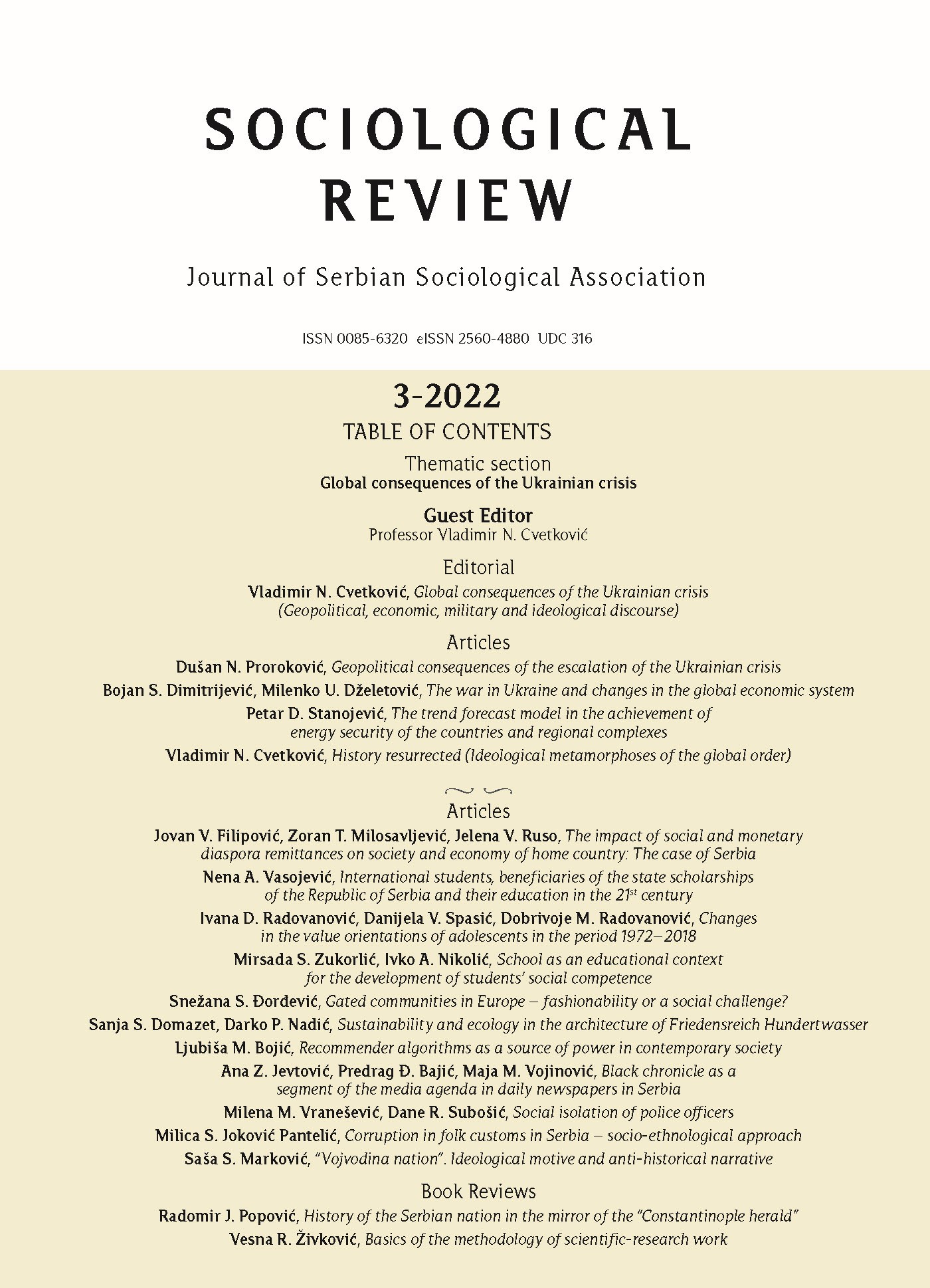Gated communities in Еurope – fashionability or a social challenge?
Gated communities in Еurope – fashionability or a social challenge?
Author(s): Snežana S. ĐorđevićSubject(s): Social Sciences, Sociology, Social development, Social differentiation, Rural and urban sociology, Social Norms / Social Control
Published by: Српско социолошко друштво
Keywords: gated communities (settlements);social segregation and poverty;democratic spirit and capacities of city;endangered public spaces;privatization
Summary/Abstract: This paper deals with the poorly researched concept of fenced settlements (housing policy), which was developed in the USA in the middle of the 20th century, but has recently been particularly affirmed in neo-liberal society, all over the world. Walled settlements also exist in social-democratic Europe, and the article studies the consequences of applying this concept, i.e. the influence of fenced settlements on the democratic spirit of the city and the democratic and development potential of the city, on the example of cities in Europe (France, Britain and Ireland) with lessons learned. Gated settlements have a number of negative effects on the community. For the needs of fenced communities, authorities often privatize roads, public spaces, and access to remaining public areas, to the detriment of the majority of residents, for whom entire complexes in the city remain inaccessible. This creates numerous social and spatial injustices, which actively undermines the democratic capacity of the city. These processes are in conflict with the democratic concept of the open city and the model of mixed housing, cultivated during the welfare state. The article relies on the analyses of existing research and studies of fenced settlements in the world through indicative examples and case studies (content analysis, synthesis, generalization, comparison). Statistical methods, analysis of regulatory changes, interviews and surveys of tenants, development managers, politicians and officials were often used in these studies. The comparative method in this paper compares the similarities and differences of fenced settlements in various countries, which is the basis for conclusions and recommendations for optimal housing policy and urban development (synthesis). The article introduces this challenging topic into the debate space of political and social sciences (field of urban studies), presents the existing consequences, and through comparison allows us to synthetically arrive at recommendations for choosing the optimal housing policy (learning from experience).
Journal: Социолошки преглед
- Issue Year: 56/2022
- Issue No: 3
- Page Range: 978-1002
- Page Count: 25
- Language: English, Serbian

